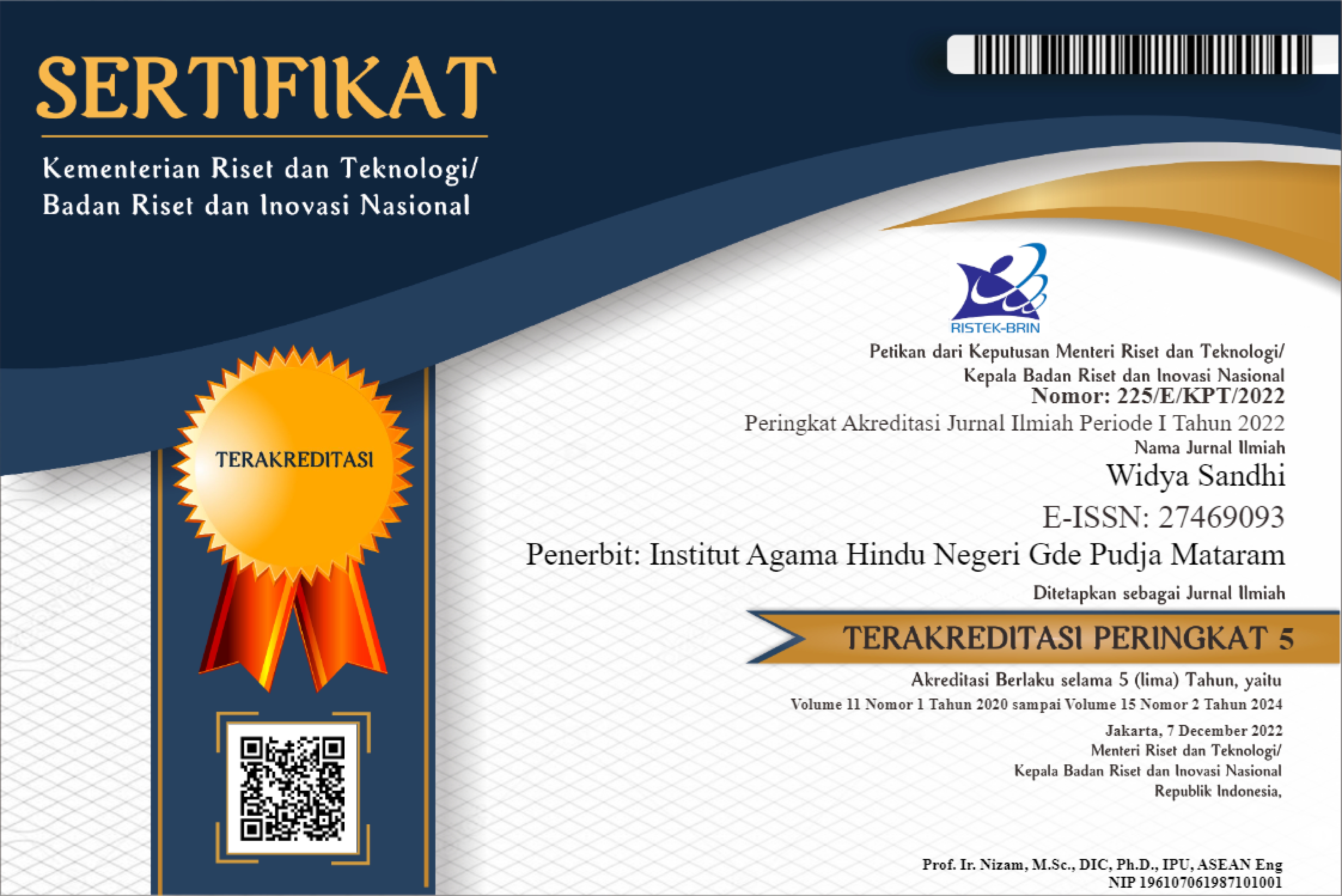KONSTRUKSI KERUKUNAN BERAGAMA PADA PLURALITAS MASYARAKAT DUSUN KERANING DALAM PENGARUSUTAMAAN MODERASI BERAGAMA
Abstract
This study aims to examine the factors that encourage the construction of religious harmony in the plurality space of the people of Dusun Keraning in the mainstreaming of religious moderation. This event is part of the community's awareness of accepting the differences that exist in people's lives. This study uses an interpretive qualitative type in order to find the factors that cause harmony in everyday life. The results of this study found that the harmony implemented by the people of Keraning Hamlet was based on an awareness of the existence of God Almighty as the creator of diversity that should be respected. Belief in the One and Only God in Pancasila, which has been made the basis of the state, is a guideline in building a culture of society that is tolerant and mutually respectful of existing differences so as to create a pattern of civilized social life. Harmony implemented by the community is characterized by a number of differences as a practice of religious moderation.
References
Bourdieu, Pierre. 1991. Language and Symbolic Power. Edited and Introduced by John B. Thompson, Translated by Gino Raymond and Matthew Adamson, Great Britain: Polity Press
..……… 1990. The Logic of Practice. Translated by Richard Nice, California: Stanford University Press
Budharta, I.B.G, dkk. 1991. “Kekuasaan dan Konflik Etnis di Lombok”. Denpasar: Laporan Penelitian Universitas Udayana.
Fashri, Fauzi. 2007. Penyingkapan Kuasa Simbol; Apropriasi Reflektif Pemikiran Pierre Bourdieu. Yogyakarta: Juxtapose
Fontana, A. dan Frey, J.H. 2009. “Wawancara Seni Ilmu Pengetahuan” dalam buku Handbook of Qualitative Research. Editor: Denzin N.K. dan Lincoln Y.S. Terjemahan Dariyatno dkk. Yogyakarta: Pustaka Pelajar
Geertz, Clifford. 1992, Tafsir Kebudayaan. Terjemahan Fransisco Budi Hardiman. Yogyakarta: Kanisius
Geriya I.W. 2004, Potensi dan Solusi Konflik dari Perspektif Sosial Budaya. dalam Jurnal Sarathi: Denpasar
Koentjaraningrat. 2003. Pengantar Antropologi I. Jakarta: Rineka Cipta
Kymlicka, Will. 2002. Kewargaan Multikultural. Jakarta: Pustaka LP3ES
Liliweri, Alo. 2009. Dasar-Dasar Komunikasi Antarbudaya. Yogyakarta: Pustaka pelajar
……….2002. Makna Budaya dalam Komunikasi Antarbudaya. Yogyakarta:LkiS.
Nawawi, Handari. 1983. Metode Penelitian Bidang Sosial. Yogyakarta: Gajah Mada University Press
Parimartha, I Gde. 1987. Hubungan Bali-Lombok dalam Abad XVI: Meniti Karya Sastra. dalam Majalah Widya Pustaka. Denpasar: Fak. Sastra Unud
Poloma, M.M. 2003. Sosiologi Kontemporer. Terjemahan Team Penerjemah Yasogama. Jakarta : PT Raja Grasindo Persada
Ritzer G. dan Goodman D.J. 2003. Teori Sosiologi Modern. Terjemahan Alimandan. Jakarta: Prenada Media
Sanderson, S.K.,2003, Makro Sosiologi, Terjemahan Farid Wajidi, S. Menno, Jakarta: PT Raja Grafindo Persada
Suja, I Wayan. 2010. Kearifan Lokal Sains Asli Bali. Surabaya: Paramita
Suprapto. 2013. Semerbak Dupa di Pulau Seribu Mesjid: Kontestasi, Integrasi, dan Resolusi Konflik Hindu-Muslim Jakarta: Kencana Prenadamedia Group.
Suprayogo Iman dan Tobroni. 2001. Metodologi Penelitian Sosial-Agama. Bandung: Remaja Rosdakarya
Triguna, I.B.Y. 2008. “Modal Budaya dalam Perspektif Teoritik dan Terapan”. dalam Buku Kebudayaan dan Modal Budaya Bali dalam teropong Lokal, Nasional, Global. Editor IBG Yudha Triguna. Denpasar: Widya Dharma
Varshney, Ashotosh. 2009. Konflik Etnis dan Peran Masyarakat Sipil:Pengalaman India.terjemahan Siti Aisyah, dkk. Jakarta: Balai Penelitian dan Pengembangan Agama Jakarta Departemen Agama
Wirawan, I W.A. and Widana, I.N.M. 2020. Construction of a Multicultural Civilization in Memarek Tradition. International Journal Innovation Creativity ang Change. Volume 11. Issue 4 hal. 126-144
Yin, Robert K. 2004. Studi Kasus, Desain & Metode. Terjemahan Djauzi Mudzakir. Jakarta: PT Raja Grafindo Persada

This work is licensed under a Creative Commons Attribution-NonCommercial-ShareAlike 4.0 International License.
Authors who publish with this journal agree to the following terms:
- Authors retain copyright and grant the journal right of first publication with the work simultaneously licensed under a Creative Commons Attribution-ShareAlike 4.0 International License. that allows others to share the work with an acknowledgment of the work's authorship and initial publication in this journal.
- Authors are able to enter into separate, additional contractual arrangements for the non-exclusive distribution of the journal's published version of the work (e.g., post it to an institutional repository or publish it in a book), with an acknowledgment of its initial publication in this journal.
- Authors are permitted and encouraged to post their work online (e.g., in institutional repositories or on their website) prior to and during the submission process, as it can lead to productive exchanges, as well as earlier and greater citation of published work (See The Effect of Open Access).






.jpg)




